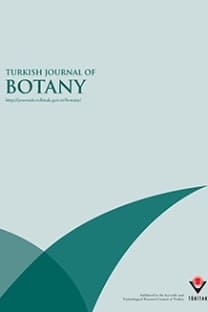Isolation and expression analysis of ethylene receptor genes from melon (Cucumis melo) fruit
Ethylene receptors are involved in ethylene sensing and signal transduction. This study was conducted to isolate genes encoding ethylene receptors from melon fruit and to determine their expression during postharvest fruit ripening. The amplification of melon fruit cDNA with degenerate primers revealed two partial cDNAs. Upon 3' and 5' RACE analysis of the cDNAs, two full length genes designated Cm-ETR1 and Cm-ETR2 were obtained. Cloning and sequencing of the genes showed that Cm-ETR1 and Cm-ETR2 genes were 2320 and 2537 bp in length, respectively. Cm-ETR1 had a predicted open reading frame (ORF) of 2223 nucleotides encoding a protein of 740 amino acids. Cm-ETR2 contained a predicted ORF of 2301 nucleotides encoding a protein of 766 amino acids. Structure and sequence analyses demonstrated that both genes had conserved domains found in ethylene receptor genes from other species, and were highly similar in terms of both nucleotide and amino acid sequences to the ethylene receptor sequences isolated from other species. The expression analyses of the genes revealed that the transcript levels of both receptor genes significantly increased during postharvest storage. The isolated receptor genes could be used to manipulate ethylene effects to delay the development of ethylene related physiological disorders and enhance the shelf life of melon fruit.
Isolation and expression analysis of ethylene receptor genes from melon (Cucumis melo) fruit
Ethylene receptors are involved in ethylene sensing and signal transduction. This study was conducted to isolate genes encoding ethylene receptors from melon fruit and to determine their expression during postharvest fruit ripening. The amplification of melon fruit cDNA with degenerate primers revealed two partial cDNAs. Upon 3' and 5' RACE analysis of the cDNAs, two full length genes designated Cm-ETR1 and Cm-ETR2 were obtained. Cloning and sequencing of the genes showed that Cm-ETR1 and Cm-ETR2 genes were 2320 and 2537 bp in length, respectively. Cm-ETR1 had a predicted open reading frame (ORF) of 2223 nucleotides encoding a protein of 740 amino acids. Cm-ETR2 contained a predicted ORF of 2301 nucleotides encoding a protein of 766 amino acids. Structure and sequence analyses demonstrated that both genes had conserved domains found in ethylene receptor genes from other species, and were highly similar in terms of both nucleotide and amino acid sequences to the ethylene receptor sequences isolated from other species. The expression analyses of the genes revealed that the transcript levels of both receptor genes significantly increased during postharvest storage. The isolated receptor genes could be used to manipulate ethylene effects to delay the development of ethylene related physiological disorders and enhance the shelf life of melon fruit.
